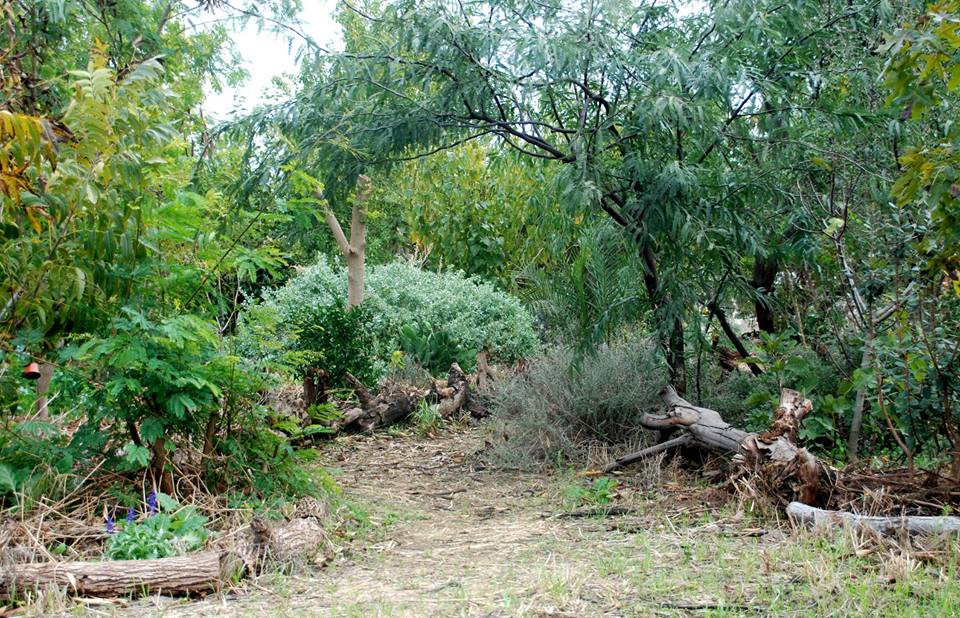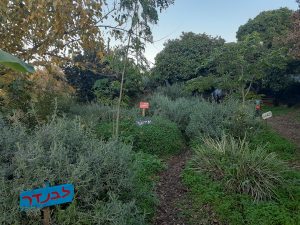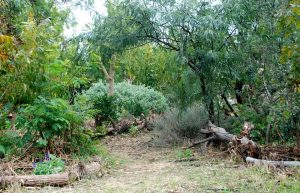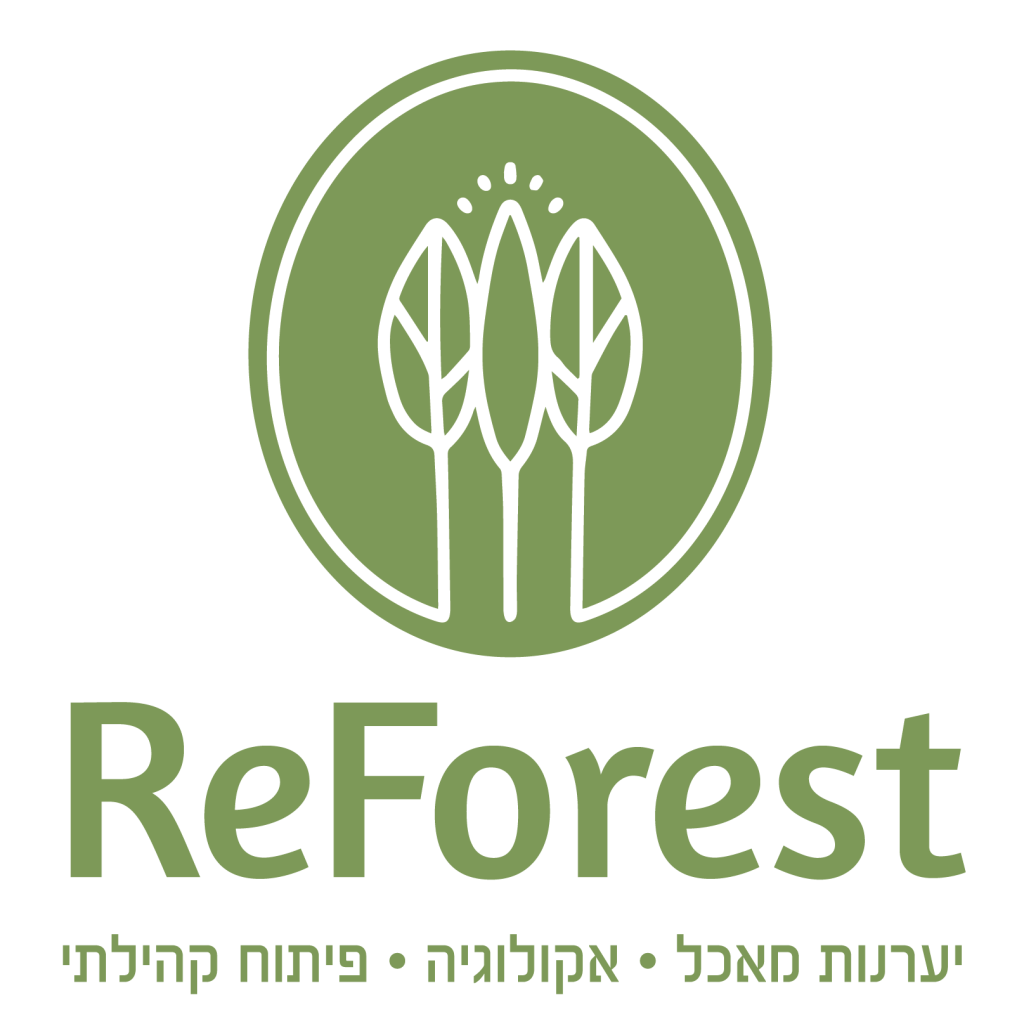Throughout this article we’ll answer the question – what exactly is a food forest? We will examine its origins, characteristics and benefits.
A food forest is a man-made ecological system which imitates the structure of a natural forest. It is made up of a great variety of edible, herb, and medicinal plants. These are planted in a large number of layers, so they support each other and flourish for many years.
Creating a food forest requires extensive professional knowledge in ecology, agronomy, landscaping and horticulture.
This is in order to provide response to three main objectives:
1. Ecological rehabilitation
The food forest creates fertile soil, contributes to the rehabilitation of the natural water cycle and prevents ground alluvium. It also creates living spaces for diverse wildlife, stores large quantities of carbon, preserves various species of local plants and balances extreme temperatures. Therefore, it’s one of the most implementable available solutions we have for dealing with the climate crisis.
2. Food Cultivation
A wide variety of edible plants are integrated in the food forest – fruit and nut trees, herbs, vegetables, greens and roots for all seasons of the year. It can be a significant part of the nutrition of the family or community maintaining the forest.
3. Creating a beneficent space for humans
Alongside the animals and vegetation, the food forest is a comfortable and beautiful space for the people who utilize and enjoy it, whether it be a family, community or school. Walking trails and paths can be integrated, as well as sitting areas, natural playground facilities, and really anything we choose!
The food forest is the ultimate expression of the permaculture approach, a holistic approach for landscaping, which derives inspiration from natural forests and woods.
It combines rehabilitation and ecological conservation, organic food growing, and landscaping.
Landscaping such a forest requires paying careful attention to the complexity of the ecological systems, the reciprocity between its living creatures, with the understanding that everything is interconnected – humans, vegetation, animals, soil.
It is designed to yield diverse fruits, provide a pleasant and natural space, and ultimately turn into a well established system that sustains itself without human intervention. The objective of this approach is to benefit life in all its forms, and create a balanced and harmonious world.
Is This New?
There are food forests thousands of years old in tropical areas, but they’ve been adapted to temperate climate only in the 20th century, by permaculture agriculturists. Only then these forests received the professional and well-known title.
Permaculture is the practice of understanding and imitating ecological systems by using scientific tools, combined with the traditional agricultural practices which characterized the thousands of years old forests around the world.
During the last few decades, hundreds of food forests popped up across the globe – in Europe, North America, Australia, Japan, New Zealand, India, and many other places.
The first food forest in Israel was created in Kidron in 2011, by the founders of ReForest.
Since then we’ve created dozens of forests in Israel and abroad.
So is it a fruit orchard?
Many wonder what’s the difference between a food forest and a fruit orchard.
Therefore, we wrote this article, which examines the differences more profoundly.
In short: an orchard describes a diverse tree grove. A plot of land on which fruit trees are planted, usually in orderly rows.
A food forest, however, describes an entire ecological system that the fruit trees are only a part of. A significant part, granted, but there is more to it.
We look at each plot or area from an ecological point of view, and integrate vegetation from different guilds in the forest. Each guild has a role in the system’s wellbeing and sustainability.
Read more about plant guilds here
What does the landscaping of a food forest look like?
In the landscaping of the forest and the manner in which we maintain it, we will utilize patterns that exist in natural ecological systems. For example:
Closed-cycle material flow – there is no waste in nature. Each component of the ecological system is important and has a role. In order to protect the fertility of the soil, we aspire to recycle the nourishment materials within the system itself.
Therefore, we do not clear the trimmed and pruned branches and foliage or the weeds in the food forest – we harvest it and let it become covering for the soil.
The covering of the soil creates a natural habitat for microorganisms which help the nourishment materials become re-available for plants. A closed-cycle material flow is created and a sustainable system is ensured.
Water conservation – the foundation for life is available water. In Israel, we must place special emphasis on the water issue, and make sure educated use is made of rainfall water, which falls in several small rain events throughout winter.
Careful planning of runoff water conservation is an integral part of landscaping a food forest; food forests help rehabilitate the water cycle and retain it in the ground.

Structuring the soil – we want to structure the soil in the food forest, as it is structured in nature, layers upon layers of organic material which disintegrates and returns to the soil via microorganisms.
That is how a living and breathing soil layer is created, ensuring fertility and health that only increases with the years. Additionally, when the soil is biologically balanced, the durability against pests and diseases increases tremendously.
Landscaping vegetation in guilds and layers – as in nature, in food forests we use a wide diversity of plants from different botanical families. The combination of the plants creates durability and health due to the fact that each plant has a role, just like organs in the body.
Some plants improve the soil, some attract pollinators or natural predators for pests, some create niches for animals, etc.
Additionally, we will combine Israeli vegetation, fruit trees, herbal and medicinal plants, perennial alongside annual plants. The planting is done in layers of vegetation, just as in a natural forest.
Click here to read the full article on landscaping guilds in food forests
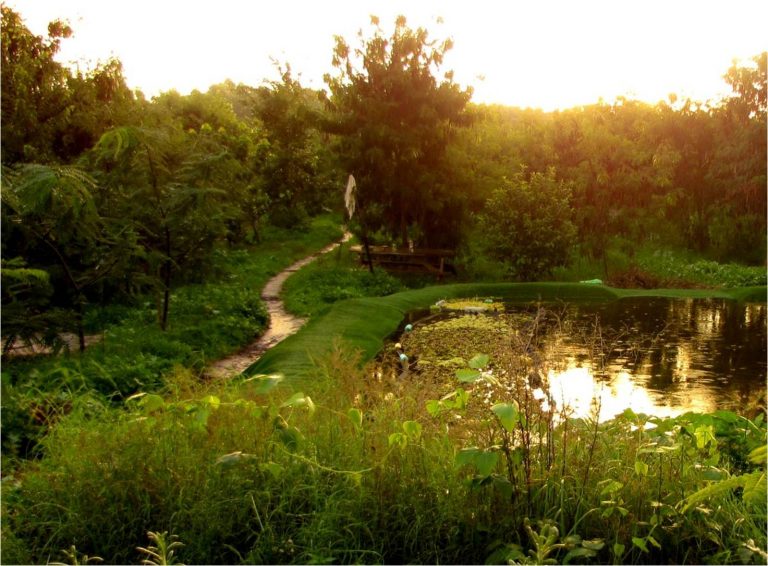
The food forest in Kidron, about 5 years after it was established in a vacant agricultural plot.
The Benefits
In the food forest, we can enjoy diverse food that grows naturally all year long, without pesticides and chemical fertilizers. We can feel like we’re in nature, and enjoy everything it has to offer us, even if we’re at the center of the city or any type of settlement.
Additionally, it serves as a space that invites people to meet up and create together, enables children to experience things that were once taken for granted, and nowadays have become priceless and rare.

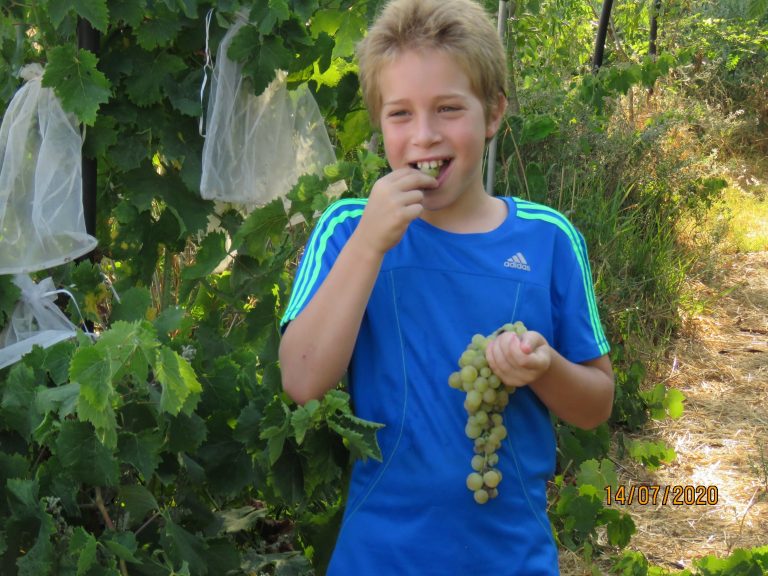
Imagine the moment in which you walk into a green forest, brimming with a variety of plants: fruit trees, wild plants, blooming ornamental plants, herb and medicinal plants. You feel the cool air in the shade of the trees, enjoy the chirping of the birds, the scent of the flowers, the peace and quiet, and the fabulous taste of a fruit picked from the tree. This is the experience upon entering the food forest, and it reminds many of the way they imagine heaven to be.
Food Forest Types
Food forests are not one solid singular concept, they are set up in different conditions and for different objectives. Here are some of the main types of uses for the food forest:
Tourist Food Forest
Food forests as a unique platform for different business initiatives in the fields of education, tourism, leisure and vacationing. In this manner, the food forest becomes not only environmentally sustainable, but also financially.
Family Food Forest
These food forests are set up on private agricultural land in moshavim. Their size varies between 0.3 to 9.8 acres, and their characteristics vary in accordance with the conditions of the land and the forest objectives, as defined by the landowners. There are family food forests designated, first and foremost, to provide the family’s required food consumption. Others are designated to be a unique spot to hang out in and rehabilitate nature. Some families add a small-scope agroforestry plot for selling purposes. Each forest and its objectives. https://youtu.be/d4MXyld-bx8
Community Food Forest
A community forest constitutes an innovative perception in the landscaping of open-air public spaces in the city – one that combines nature, agriculture, education and community and is an integral part of the urban forest tapestry.
More than 90% of people live in the city nowadays. The inhabitants of the city want to enjoy all the advantages urban life has to offer, and minimize the disadvantages.
Accessibility to nature, a healthy lifestyle and community life are important values we want to provide a response for. There are unutilized open-air public spaces in every city that can serve as a driving force for the community if they are developed and managed wisely.
- Reinforces the satisfaction, trust and sense of partnership between the residents and the local authority.
- Increases community resilience.
- Creates a platform for initiatives and entrepreneurship for the residents in the fields of community, health and sustainability.
- Improves the quality of life in the neighborhood and even raises its real estate value.
- Serves as a high quality outside-the-classroom learning space for local education institutions.
- Trains the residents in food cultivation, practical ecology and sustainability.

Want to set up a community food forest through your municipality or council? Write to us, and we’ll try to help.
How much does it cost?
All the numbers regarding the costs for setting up a food forest can be found in this link. The price of a forest is determined according to many parameters, each significantly affecting the project budget scope.
For example: a mature fruit tree can cost a few hundred Shekels. A young fruit tree seedling costs several tens. When multiplied by hundreds of seedlings, this can make a huge difference in the price.
Additional elements integrated in the food forest, such as paths, sitting areas and pavilions, can also alter the price significantly.
Components present in (almost) every food forest; their varying price should be taken into consideration:
- Groundwork for conservation of runoff water
- Tree irrigation system (for the first few years, at least)
- Seedlings and seeds
- Compost
- Mulch covering
- Path covering
- Sitting areas, benches and different contemplation areas made from natural materials
Want to learn more?
Sign up for our newsletter! Once a month we’ll send you videos and articles on food forests, fascinating training possibilities and special events.
The episode is also available on Spotify and all other podcast platforms.
You can also click on one of the articles below, and broaden your knowledge in food forests.
Good luck!

